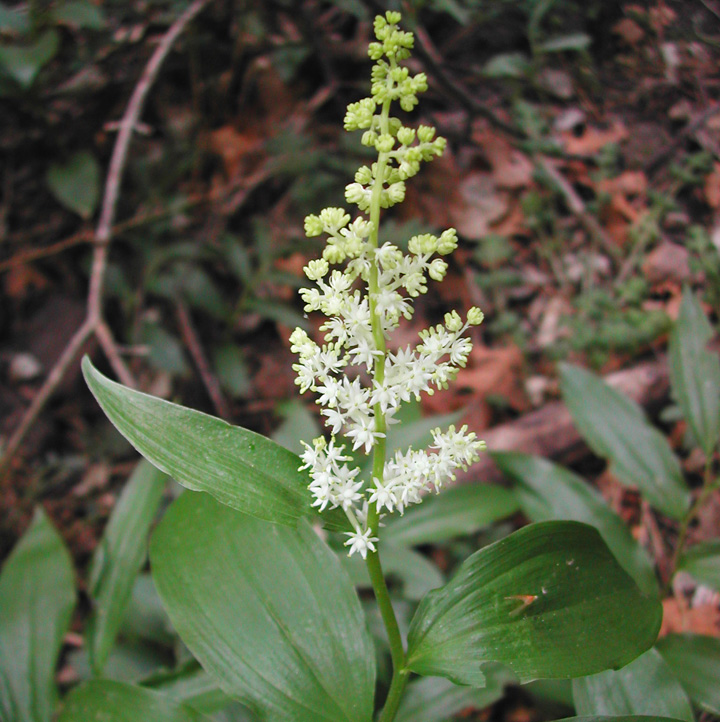
|
Family: Asparagaceae |
Outside the flora area, Maianthemum may be epiphytic, with foliage stems pendent or erect; two species are dioecious; tepals may be fused, the perianth campanulate; and tepals and anthers may be pink, green, or violet. The two species of Maianthemum that bear 4-tepaled flowers, M. canadense and M. dilatatum, are very similar to one another and to the boreal Eurasian species M. bifolium (Linnaeus) F. W. Schmidt, and the three have sometimes been considered varieties of a single species. In most recent floristic works, the genus Maianthemum has been limited to these three species because of their reduced flowers, whereas the remaining species, which bear 6-tepaled flowers more typical of the Liliaceae, have been placed in the genus Smilacina. J. V. LaFrankie (1986) placed all the species in a single genus. The monophyly of Maianthemum sensu lato is supported by morphological consistencies including baccate fruits that are marked when immature, a consistent and unique karyotype (S. Kawano and H. H. Iltis 1966; S. Kawano et al. 1967; N. H. Valentine and H. M. Hassan 1971; M. N. Tamura 1995), and molecular analysis (P. J. Rudall et al. 2000; J. Yamashita and M. N. Tamura 2000). The 2-merous floral condition in Maianthemum sensu stricto is the result of anatomical reduction from the 3-merous state (F. H. Utech and S. Kawano 1976).
Tep 4, distinct, spreading; stamens 4, hypogynous; filaments slender; anthers introrse; ovary bilocular, with 2-lobed style and 2 ovules per locule; berry globose, 1-2-seeded; low herbs from a slender rhizome, the erect stem with a few lvs and a short terminal raceme of small white fls. 3, N. Temp. Gleason, Henry A. & Cronquist, Arthur J. 1991. Manual of vascular plants of northeastern United States and adjacent Canada. lxxv + 910 pp. ©The New York Botanical Garden. All rights reserved. Used by permission. |
This project was made possible in part by the Institute of Museum and Library Services [MG-70-19-0057-19].
Powered by Symbiota



